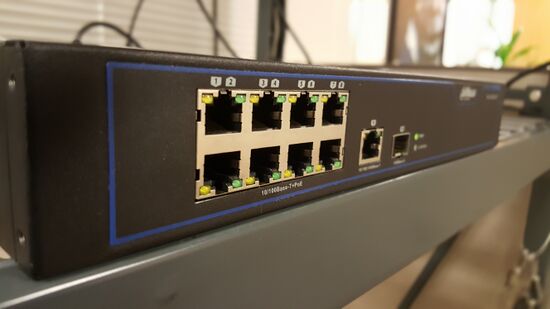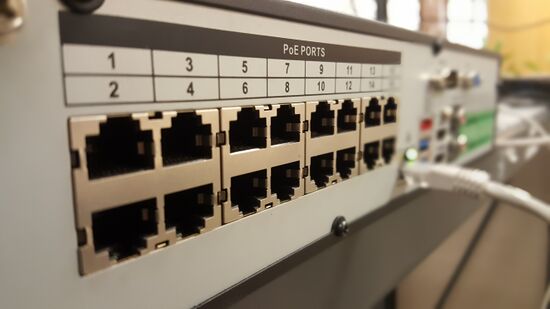Difference between revisions of "Troubleshoot/POE IEEE 802.3at 2009 vs IE 802.3AF 2003"
(→POE: IEEE 802.3at-2009 vs. IE 802.3AF-2003) |
|||
| Line 4: | Line 4: | ||
'''Dahua POE Switch''' | '''Dahua POE Switch''' | ||
| − | [[File: | + | [[File:Poepic3.jpg|550px]] |
| Line 13: | Line 13: | ||
'''POE in Back of Dahua NVR''' | '''POE in Back of Dahua NVR''' | ||
| − | [[File: | + | [[File:Poepic2.jpg|550px]] |
'''Dahua POE Injector''' | '''Dahua POE Injector''' | ||
| − | [[File: | + | [[File:Poepic4.png|550px]] |
| − | |||
| − | |||
| + | <div style="float: right;"> [[#top|[Return To Top]]]</div> | ||
[[Category:POE]] | [[Category:POE]] | ||
Latest revision as of 01:02, 5 November 2020
POE: IEEE 802.3at-2009 vs. IE 802.3AF-2003
This technology is especially useful for powering IP telephones , wireless LAN access points, IP Camera and Cameras with pan tilt zoom(PTZ), POE injectors, remote Ethernet switches, embedded computers , thin clients and LCDs.
Dahua POE Switch
POE: IE 802.3AF-2003 The original IEEE 802.3af-2003 PoE standard provides up to 15.4 W of DC power (minimum 44 V DC and 350 mA) to each device. Only 12.95 W is assured to be available at the powered device as some power is dissipated in the cable.
POE: IEEE 802.3at-2009 The IEEE 802.3at-2009 PoE standard, sometimes called "POE+ or POE PLUS", (Ratified September 11, 2009), provides up to 30 watts) and 25.5 W of DC power is assured to be available at the powered device as some power is dissipated in the cable.
POE in Back of Dahua NVR
Dahua POE Injector


